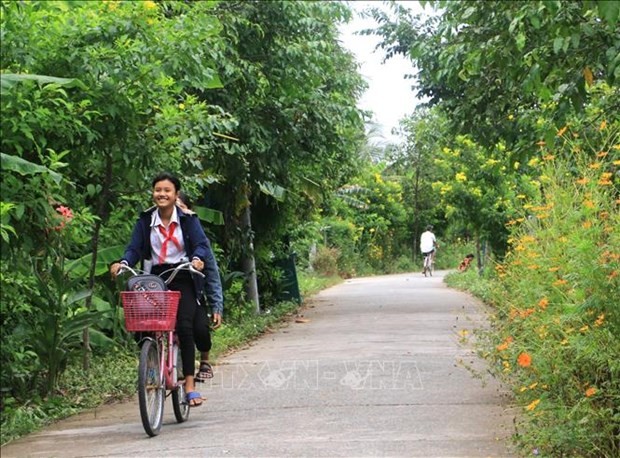
Vinh Long seeks to improve lives of ethnic minority people
Latest
 |
| A road in Dong Binh commune of Binh Minh town, Vinh Long province. (Photo: VNA) |
It aims to reduce the poverty rate of its ethnic minority households by two percentage points a year from now to 2025.
More than 10.1% of ethnic minority households in the province are poor and 9.5% are near poor.
All ethnic minority households should not lack housing and farming land for production by 2025.
The province also aims for all communes to have paved roads for cars, all schools and health clinics to be built with concrete, and 99% of households to have access to power grids.
It also aims for 50% of ethnic workers to be trained in vocational skills by 2025.
To meet the targets, the province will mobilise all resources for socio-economic development in ethnic minority areas, with focus on the collective economy, private economy, the combination of agricultural production and processing, and linkages among stakeholders in agricultural production and consumption in ethnic minority areas.
It will also develop more boarding schools for ethnic minority students to improve the quality of human resources, invest in more infrastructure facilities, especially the transport system, to serve the lives and production of ethnic minority people, and preserve and promote the value of ethnic people’s tangible and intangible culture, festivals and ceremonies.
There are more than 26,600 ethnic people in the province, including 22,600 Khmer people, accounting for 2.6% of Vinh Long’s population.
All communes where there are ethnic people have concrete roads, 98% of all communes have access to national power grids, and all health clinics have doctors.
Thach Duong, head of the provincial Committee for Ethnic Minority Affairs, said the province has five communes classified as ethnic minority communes under the Government’s Decision 861 issued last year. Two of them have been recognised as new-style rural communes, and one as an advanced new-style rural commune.
The province will mobilise resources to develop the two remaining ones into new-style rural area communes in 2025, Duong said.













